Example of
using Nikon Coolpix 995 digital camera for astronomy
purposes
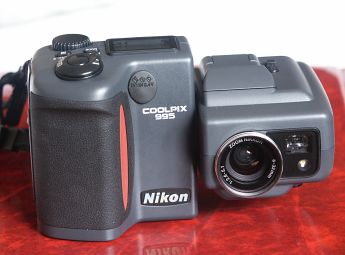 |
Nikon Coolpix 995
CCD chip: SONY ICX252AK (Type 1/1.8")
Image size: Diagonal 8.93mm, 7.2mm x 5,35mm
Effective pixels: 2088(H) x 1550(V) ~3.24M pixels
Total number of pixels: 2140(H) x 1560(V) ~3.34M
pixels
Unit cell (pixel) size: 3.45µm(H) x 3.45µm(V)
Chip size: 13.8mm(H) x 12.0mm(V)
Integrated lens: f=8.2mm-31mm / F2.6-F5.1
Sensitivity: ISO100 - ISO800
Color filter: Complementary CYGM
|
Wide field astrophotography - using built in lens
| Focal Length |
f=8.2mm |
f=18.8mm |
f=31mm |
| Zoom Factor |
1x |
2.29x |
3.78x |
| Maximum speed |
F2.6 |
F3.8 |
F5.1 |
| Aperture at maximum speed |
3.15mm |
4.95mm |
6.08mm |
| Resolution (limited by
diffraction) |
36.16
arcsec |
23.04
arcsec |
18.75
arcsec |
| Pixel resolution (full image size) |
84.27
arcsec/pix |
37.85
arcsec/pix |
22.29
arcsec/pix |
| Field of view |
2876.3'
x 2157.2'
47.9° x 36.0° |
1292'
x 969'
21.5° x 16.2° |
760.83'
x 570.62'
12.7° x 9.5° |
Note: Pixel resolution and field of view are
approximate values, because in wide field of view the
pixel resolution is not as linear accross the image as it
is in narrower fields of view.
Astrophotography with
telescope - using afocal photography
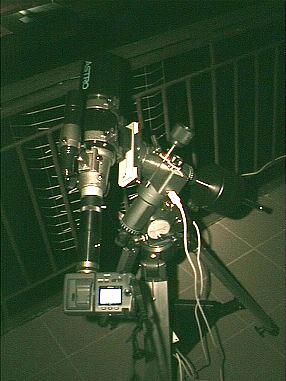
Afocal photography with 80mm
F5 refractor. |
Most of current
cameras in the market have their lens fixed with
camera body - there is no possibility to detach
objective lens and use camera at prime focus.
But there is another possibility how to use
camera with scope - afocal
photography. The camera with
objective lens works like a human eye - the CCD
is like retina and objective lens like eye lens.
That means that we can attach the camera to the
eyepiece (just like we enclose our eyes to
eyepiece). The eyepiece should be focused to
required object and camera should be focused to
infinity.
There are several ways how to attach camera to
eyepiece. Very good description of various
adapters you can find on Simon's Szykman web
pages - Digital
Camera Telescope Adapters and Homegrown
Digital Camera Telescope Adapters.In my
case I am using standard photography adapter for
prime focus and eyepiece projection for 35mm film
camera. It has 42x0.75mm thread (T-thread) for
attaching T-adapter specific for each camera. I
ordered a special adapter for Nikon from Astromeccanica
company.
|
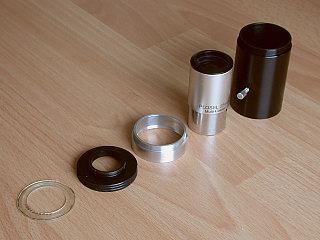
All parts needed for afocal photography (from
right to left):
1, Camera adapter with T-Thread
2, 25mm Plössl eyepiece
3, Additional extension ring
4, T-Thread adapter for Nikon CP995 (from Astromeccanica)
5, Homemade plastic washer (made from CD-R disk) |

25mm eyepiece in camera adapter. Eyepiece sticks
out camera adapter, so additional extension ring
is necessary. |
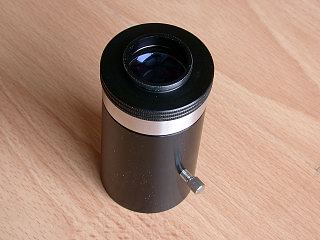
Camera adapter + eyepiece + extension ring + T-Thread
adapter for Nikon CP995. Eyepiece should be as
close to Nikon's objective lens as possible to
reduce vignetting. |
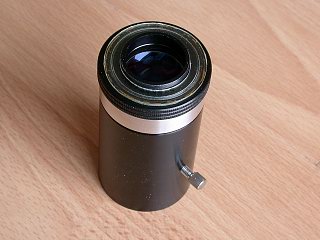
Plastic washer added for preventing Nikon
external protective objective glass from
scratching from 28mm threaded part of T-Thread
adapter (it doesn't allow to screw adapter too
deep) |
Problem of vignetting
Field of view (FOV) of standard 35mm camera with 50mm
objective is 47°. Transfocator at wide angle position
has FOV even greater. Common Plössl eyepieces have FOV
about 50°. As digital camera's objective is a little bit
away from eyepiece, the picture created by eyepiece may
not cover the whole CCD area. This phenomenon is called vignetting.
By another words - there exists an area in CCD (film) - a
circle, which is fully illuminated (all rays captured by
objective lens/mirror and transformed by eypiece fall to
CCD area. The area outside full illuminated circle
becomes darker untill total black.
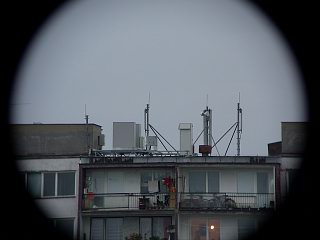
80mm F5 refractor +
25mm Plössl Eyepiece + Nikon @ 8.2mm (1X Zoom)
Visible vignetting |
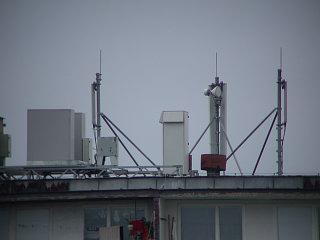
80mm F5 refractor +
25mm Plössl Eyepiece + Nikon @ 16.9mm (2X Zoom)
Only a small vignetting in corners notable |
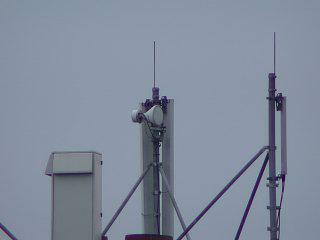
80mm F5 refractor +
25mm Plössl Eyepiece + Nikon @ 31.0mm (3.8X
Zoom)
Virtually no vignetting |
|
Calculation of effective focal length of afocal system
Legend:
| EFL |
- Effective Focal Length |
|
FE |
- Effective Focal Ratio (F Number, Speed) |
| fO |
- Focal Length of Camera's Objective Lens |
|
F |
- Scope's Focal Ratio (F Number, Speed) |
| fT |
- Focal Length of Telescope's Objective Lens / Mirror |
|
DT |
- Objective Lens / Mirror Diameter |
| fE |
- Focal Length of Eyepiece |
|
w |
- CCD chip width |
| M |
- Telescope Magnification |
|
h |
- CCD chip height |
| |
|
|
FOVEH |
- Result Field of View (horizontal) |
| |
|
|
FOVEV |
- Result Field of View (vertical) |
Effective Focal Length:
EFL = fO . fT / fE
(1.1)
EFL = fO
. M (1.2)
Effective F Number:
FE
= EFL / DT (1.3)
FE = fO . fT / (fE.
DT) (1.4)
FE
= F . (fO /
fE)
(1.5)
Result Field of View (Horizontal,
Vertical):
FOVEH
= 2 . arctan(w / (2 . EFL)) (1.6)
FOVEV
= 2 . arctan(h / (2 . EFL)) (1.7)
Practical example
- afocal photography with my scopes
| |
80mm F5 refractor |
200mm F6
Newtonian |
| Scope parameters |
| Diameter of objective |
80mm |
200mm |
| Focal length |
400mm |
1200mm |
| Focal ratio |
F5 |
F6 |
| Focal length of eyepiece |
25mm |
25mm |
| Magnification |
16x |
48x |
| Nikon @ 8.2mm |
| Effective focal length |
131.2mm |
393.6mm |
| Effective focal length [35mm] |
623.2mm |
1869.6mm |
| Effective focal ratio |
F1.64 |
F1.97 |
| Result FOV (horizontal) |
3.14° |
1.05° |
| Nikon @ 16.9mm |
| Effective focal length |
270.4mm |
811.2mm |
| Effective focal length [35mm] |
1284.4mm |
3853.2mm |
| Effective focal ratio |
F3.38 |
F4.06 |
| Result FOV (horizontal) |
1.53° |
0.51° |
| Nikon @ 31mm |
| Effective focal length |
496mm |
1488mm |
| Effective focal length [35mm] |
2356mm |
7068mm |
| Effective focal ratio |
F6.2 |
F7.44 |
| Result FOV (horizontal) |
0.83° |
0.28° |
Look at M13
and M57
photos using afocal with my 80mm F5 scope.
Back to AstroPhotography page
Computer generated images,
real images, drawings and texts are property of the
author and may not be reproduced or used without
permission of author.

Last Update:
08.07.2004
|